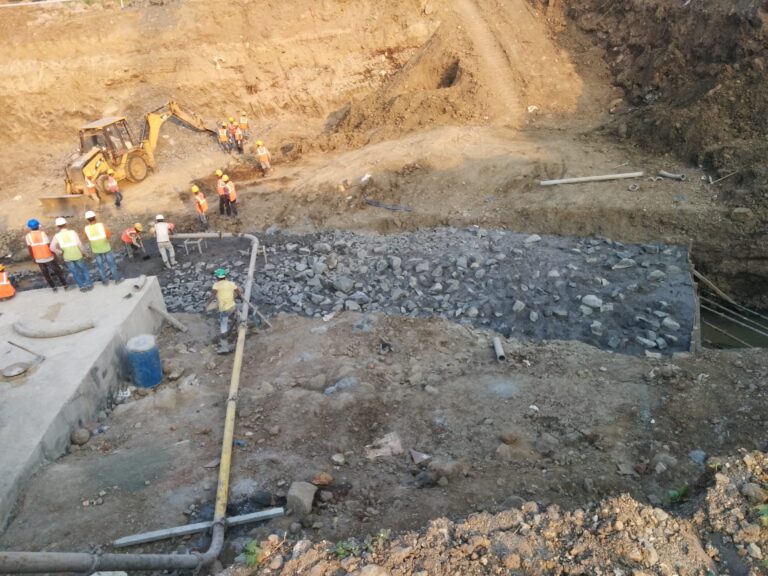A test certificate could be issued for manufactured material by the manufacturer, but sand is not a manufactured material, so we have to do some field tests.
What is the bulking of sand?
Bulking of sand is caused due to moisture content.

The volume change that sand attains when moisture content present in it is known as the bulking of sand.
When the moisture content is present in the sand, it forms a thin film around each sand particle that makes the adjusted particles push little away from them. This change makes the overall volume of the sand to increase.
Why is it important to find bulking of sand?
Up to the M25 grade of concrete, we make nominal mixes by volumetric measurement. In the design mix, we weigh the materials.
If the moisture is present in the sand, then it makes the sand look bulkier, which could result in inadequate sand proportion in the concrete ratio.
For Example, If we need to add 1m3 sand in the concrete mix ratio, we take 1.3 m3. The reason for that is the moisture content present in the sand makes it a little bulkier. When we add more water to the sand, the thin film will disappear, and the volume decreases.
The 5% to 8% of surface moisture will increase the bulking of sand up to 20% to 30%.
There are other reasons too,
- The concrete will lose its strength.
- The coarse aggregate will be affected by the moisture content.
- It will be changing the volumetric mix proportion of concrete.
- The concrete seems to be stony, and it may be prone to segregation.
- Due to the surface moisture, there is a chance for honeycomb formation in concrete.
Bulking of Sand Graph

It is essential to check the moisture content every time before using it so that we could add a respective percentage buffer to make the right concrete mix ratio.
Note – Fine sand bulks more compared to coarse sand. Extremely fine sand particles bulk as much as about 40%.
How do you calculate the bulking of sand?
Is it possible to check the moisture content for every load? Yes, it is.
Because the bulking of a sand test is very simple which you could do on the field. It requires
- 250 ml of measuring cylinder
- Steel tamping rod
- Sand sample
Bulking of Sand Test
The bulking of the sand test should be done as per IS 2386.
Determination of Bulking of Fine Aggregate
Procedure
- Take a 250ml capacity measuring cylinder.
- Fill the sand up to 200 ml.
- Now remove the sand from the cylinder and take it away in a container.
- Refill the cylinder with water up to 100ml to saturate the sand thoroughly.
- Now empty the sand from the container into the water-filled cylinder.
- Using the steel tamping rod, stir the sand well.
- Now the level of saturated sand is below the level of what we filled in the earlier sand & record the level as y.
Bulking of Sand = (200 – Y) / Y X 100
Complete the test with at least 3 samples to get an average value.
Observation
| DESCRIPTION | SAMPLE 1 | SAMPLE 2 | SAMPLE 3 |
| The volume of loose sand, ml (a) | |||
| The volume of saturated sand, ml (b) | |||
| Percentage of bulking
= (200-y) / y x 100 |
Video Illustration
Video Courtesy – NCTEL
Happy Learning 🙂



